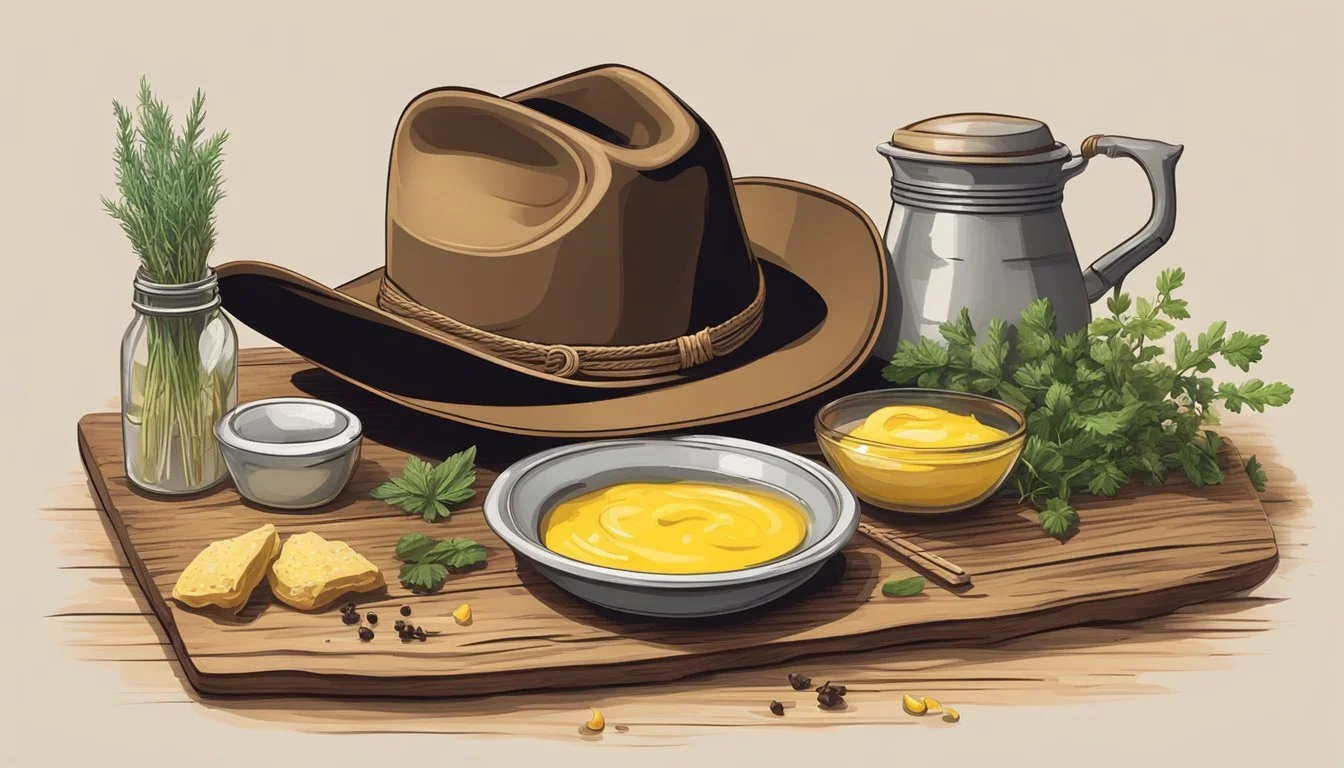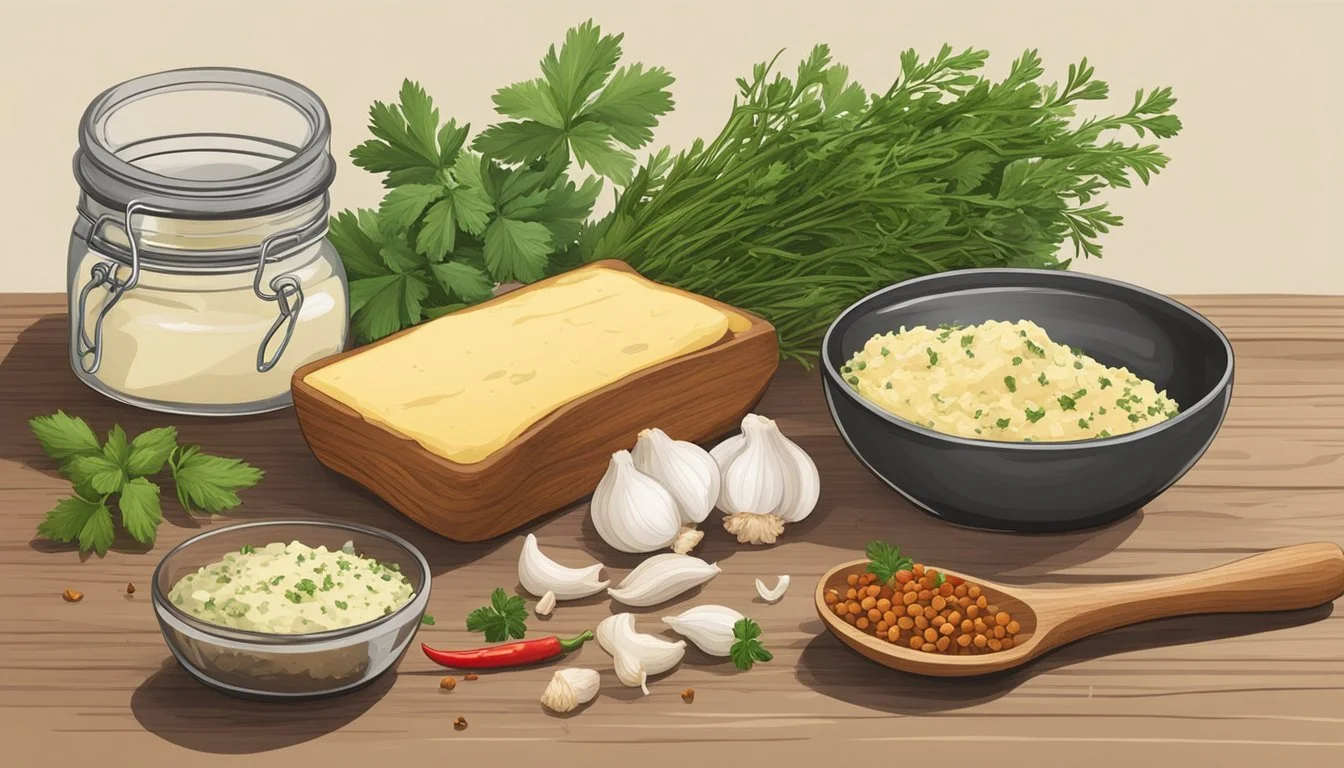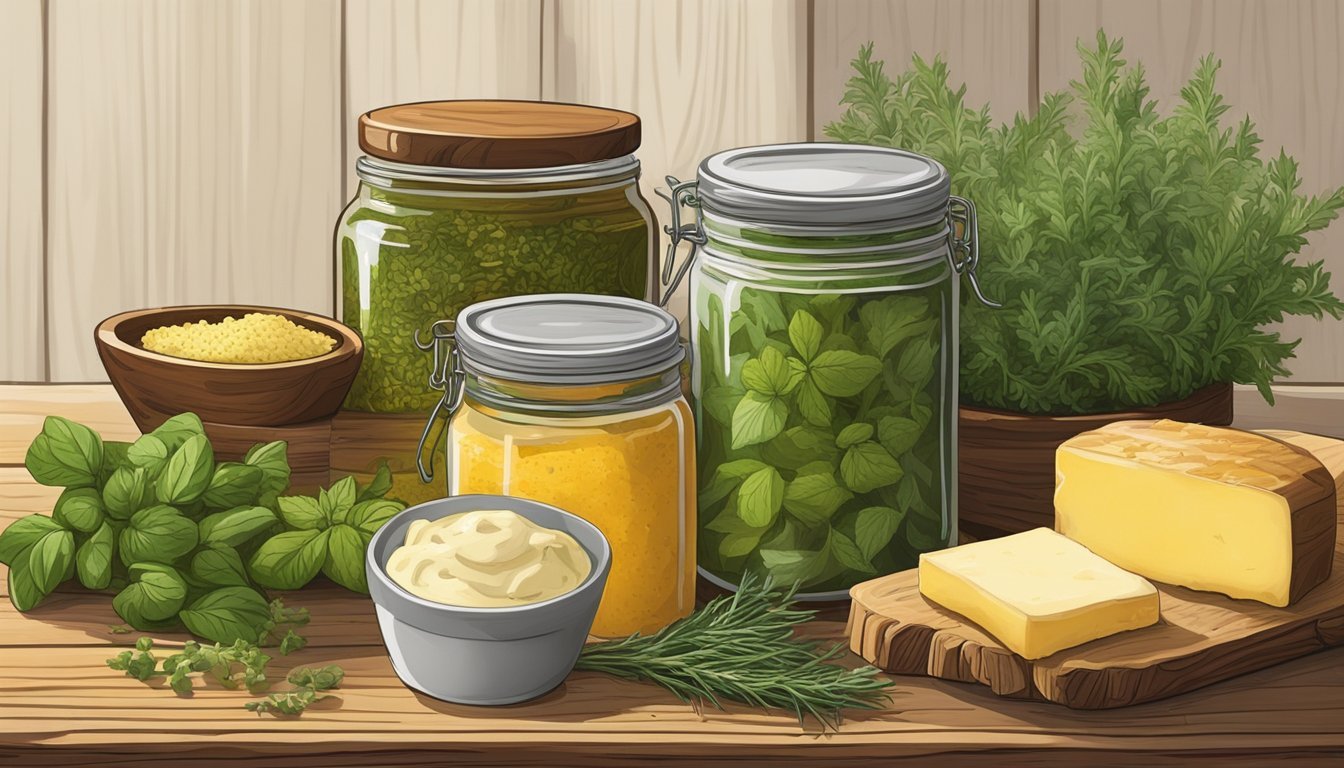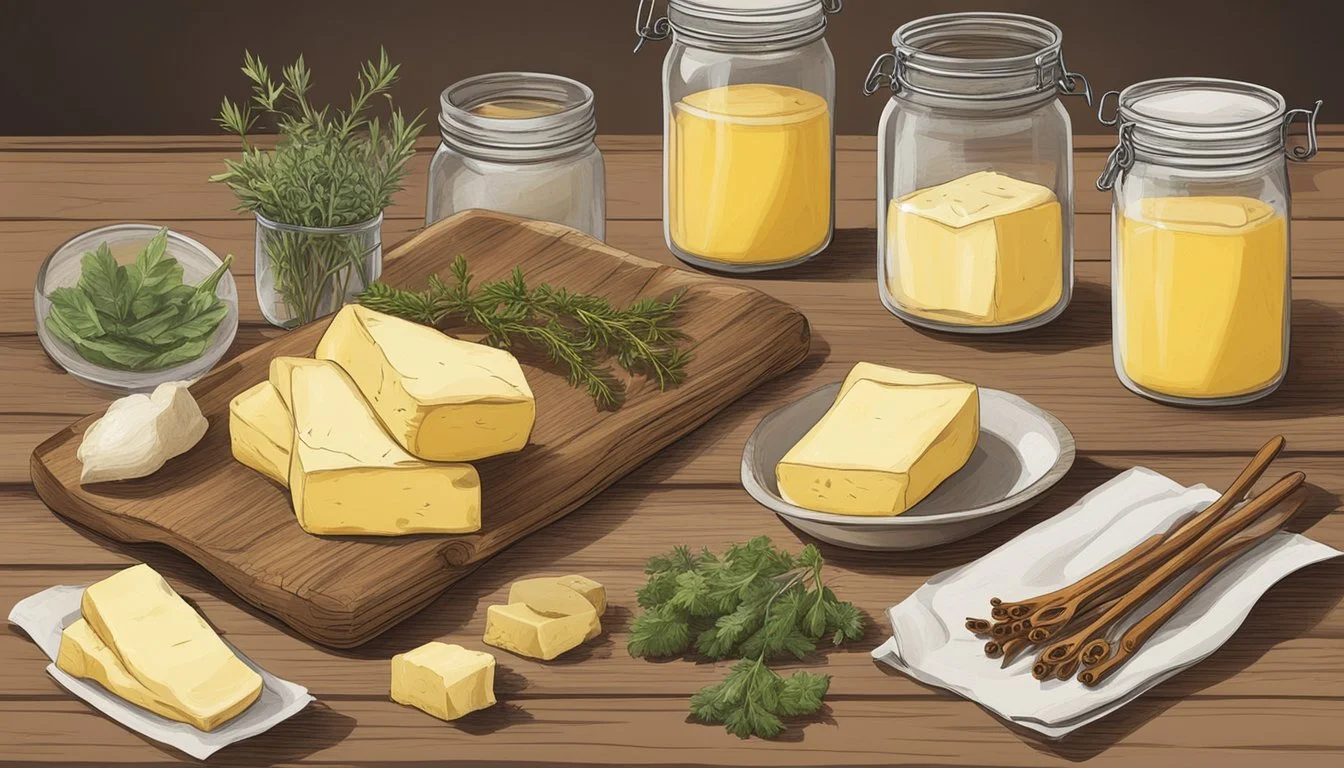The Best Herbs and Spices to Enhance Your Cowboy Butter
A Flavor Guide
Cowboy butter, a rich and flavor-packed condiment, elevates the taste experience of countless dishes. This compound butter is renowned for its versatility and the depth of flavor it adds to proteins, vegetables, and breads. Infused with a blend of herbs and spices, cowboy butter melds the creamy texture of butter with an array of aromatic and savory ingredients, creating a delightful combination that can be both rustic and refined.
The key to an outstanding cowboy butter lies in the judicious selection of herbs and spices. These not only impart a burst of flavor but also complement the inherent richness of the butter. Among the myriad choices, certain herbs such as parsley and chives are cherished for their fresh, green notes, while spices like paprika and red pepper flakes introduce a subtle heat and complexity to the palate.
Moreover, the inclusion of garlic in cowboy butter is practically non-negotiable for its pungent zest, which pairs exceptionally well with the creamy base. When these components are thoughtfully chosen and combined, they produce a cowboy butter that is not merely a condiment but a transformative element that accentuates the natural flavors of dishes with its robust character.
Understanding Cowboy Butter
Cowboy butter is a versatile condiment that can serve both as a dip and spread, elevating a multitude of recipes with its rich, herb-infused profile. It strikes an appealing balance between the richness of butter and the boldness of selected spices and herbs.
Origins and Popularity
Originating in American cuisine, cowboy butter has garnered popularity for its robust flavor and its utility across various dishes. It's known primarily as a butter sauce that combines the creamy texture of butter with aromatic herbs, a tangy note from citrus, and a hint of heat from spices. The name itself suggests a rustic and hearty accompaniment, befitting of its supposed Western roots, where it likely served as an easy-to-make, flavorful addition to grilled meats and vegetables.
The condiment has seen a resurgence in home kitchens and restaurants alike, where it's lauded for its simplicity and adaptability. A typical cowboy butter recipe might include ingredients like garlic, parsley, red pepper flakes, and lemon zest, but its true appeal lies in its customization; chefs and home cooks can create their own cowboy butter sauce variations to pair with their favorite dishes.
As a dip, cowboy butter provides a dynamic contrast to the simplicity of crusty bread or steamed artichokes. When used as a spread, it transforms ordinary toast or baked potato into culinary delights. Its evolution is ongoing, with new recipes constantly emerging to showcase its full potential as a standout condiment.
Key Ingredients
Creating the perfect Cowboy Butter involves a blend of quality butter, fresh herbs, and bold spices to enhance the flavors of your favorite dishes.
Butter Basics
Cowboy Butter starts with butter as its foundation. The type of butter used can alter the taste and quality of the final product. For the best results, one should choose unsalted butter, which allows for precise seasoning control. The use of unsalted butter also ensures that the nuanced flavors of the herbs and spices are not overwhelmed.
Herbs Harmony
Herbs add the fresh, aromatic depth that makes Cowboy Butter shine. The harmony between different herbs is essential for a balanced flavor profile. Key herbs often include:
Parsley: Provides a bright, fresh taste.
Chives: Contribute a mild, onion-like flavor.
Thyme: Offers a subtle, earthy note.
Cilantro: Brings a distinctive, zesty kick.
When using herbs, one has to decide between fresh herbs and dried herbs. Fresh herbs typically provide a more vibrant flavor, while dried herbs offer convenience and a more concentrated taste.
Spices Selection
A thoughtfully curated selection of spices can elevate Cowboy Butter from good to unforgettable. A combination of the following spices is commonly used:
Garlic: A staple for its robust flavor.
Dijon Mustard: Adds depth and some tanginess.
Black Pepper: Gives a sharp, piquant edge.
Cayenne Pepper: Introduces a subtle heat.
Salt: Essential for enhancing all other flavors.
Lemon Zest: Brightens the butter with citrus notes.
It's important to balance these spices, ensuring that no single flavor overpowers the others. Adjusting the amount of each to taste is key.
In summary, the best Cowboy Butter requires careful consideration of each component. Starting with quality butter, blending harmonious herbs, and selecting complementary spices is the trifecta for a flavorful and versatile condiment.
Customizing Your Cowboy Butter
Creating the perfect Cowboy Butter involves personalizing the blend of herbs and spices to match one's taste preferences. From the heat level to the freshness of herbs and the choice of butter, each component plays a vital role in the final flavor profile.
Adjusting Spices for Heat
The intensity of heat in Cowboy Butter can be altered using a variety of spices. For a milder taste, one might opt for paprika, which offers a subtle warmth. To increase the heat, cayenne pepper can be added in small increments. For those who enjoy a bit of texture and intermittent bursts of spiciness, crushed red pepper flakes are suitable. It is important to add these gradually and taste as one goes:
Paprika: Mild warmth, earthy flavor
Smoked Paprika: Deeper, smoky undertone
Cayenne Pepper: Sharp, potent heat
Crushed Red Pepper Flakes: Varied texture, sharp heat
Herbal Variations for Freshness
Herbs significantly contribute to the freshness of Cowboy Butter. Classics such as parsley and chives are commonly used, but variations such as thyme or dill can bring a unique twist. Incorporating garlic powder provides a consistent garlic flavor, while lemon zest and lemon juice add a zesty freshness that cuts through the richness of the butter:
Parsley: Clean, slightly peppery
Chives: Mild onion-like flavor
Thyme: Subtle, earthy with a hint of mint
Lemon Zest/Juice: Bright acidity, citrus note
Garlic Powder: Mellow, consistent garlic essence
Butter Types and Why They Matter
The foundation of any Cowboy Butter is, of course, the butter itself. The type of butter used—whether salted butter or unsalted butter—impacts the overall flavor and must be considered in relation to the other added seasonings. Salted butter brings its own salinity, potentially reducing the need for additional salt. Unsalted butter offers a neutral base, allowing for precise control of the sodium content in the mixer. The choice between salted and unsalted butter depends on one's preference for controlling the seasoning:
Salted Butter: Brings its own salt content
Unsalted Butter: Allows for controlled seasoning
Preparing Cowboy Butter
The preparation of Cowboy Butter involves a straightforward process of mixing the ingredients to create a flavorful blend, then properly shaping and storing the product for use.
Mixing Technique
One begins by melting the butter to ensure it can easily combine with other components. In a mixing bowl, the cook should stir together the melted butter, finely minced garlic, chopped herbs such as parsley and chives, lemon zest, and a medley of spices which typically include chili powder, smoked paprika, black pepper, and crushed red pepper flakes. This creates a rich and aromatic mixture. For a smooth consistency, it is essential to mix the ingredients thoroughly until they are well blended.
Shaping and Storing
After the butter mixture is prepared, the next step is to shape it into a log. This is commonly done by transferring the mixture onto a piece of plastic wrap or wax paper. Then, by rolling and shaping with the hands, the butter is formed into a smooth log. Once shaped, the butter should be wrapped tightly to remove any access to air. This ensures freshness and prevents odor absorption from the fridge or freezer where it will be stored. The wrapped log can be placed in an airtight container to further maintain its quality. To store the Cowboy Butter, one can either refrigerate it for immediate use, typically lasting for a week or two, or freeze it if they wish to preserve it for an extended period. The butter should be thawed before use if it has been stored in the freezer.
Serving Suggestions
Cowboy Butter, with its robust flavors, enhances a variety of dishes from grilled meats to simple breads, intensifying their taste profiles remarkably well.
Best Pairings for Meats
For a steak enthusiast, Cowboy Butter adds a luxurious depth; a dollop melting over a hot, grilled steak is a quintessential pairing. Grilled meats, whether it's chicken, pork, or fish, are transformed when Cowboy Butter is brushed on as they come off the grill.
Steak: Brush on Cowboy Butter during the last few minutes of grilling.
Chicken: Spread underneath the skin before roasting for added moisture and flavor.
Pork: Incorporate into a glaze to balance the natural richness of pork cuts.
Fish: Dollop on top after grilling to complement the delicate flavors of seafood.
Cowboy Butter with Vegetables and Breads
Cowboy Butter isn't limited to meat. It performs equally well as a dip or spread for veggies and bread. Corn on the cob slathered in Cowboy Butter becomes a savory side dish, while crusty bread dipped in melted Cowboy Butter is a simple yet satisfying treat.
Vegetables: Toss roasted or grilled veggies with Cowboy Butter for enhanced flavor.
Breads: Spread over warm, crusty bread or dinner rolls instead of plain butter.
Utilize Cowboy Butter to effortlessly upgrade your dishes, whether you're serving a gourmet meat platter or a casual vegetable medley.
Recipe and Instructions
Cowboy butter is a rich, flavorful compound butter that enhances the taste of meats, vegetables, and bread. This section provides a detailed guide on how to create this delectable condiment, focusing on the herbs and spices that give it its signature taste.
Step-by-Step Guide
Gather Ingredients:
1 cup (2 sticks) unsalted butter, softened
4 cloves garlic, minced
1/4 cup fresh parsley, finely chopped
2 tablespoons fresh chives, finely chopped
Zest of 1 lemon
2 tablespoons lemon juice
2 teaspoons Dijon mustard
1/2 teaspoon smoked paprika
1/2 teaspoon chili powder
1/4 teaspoon crushed red pepper flakes
1/2 teaspoon salt
1/4 teaspoon black pepper
1 teaspoon fresh thyme leaves
Instructions:
Combine Herbs and Spices: In a medium bowl, thoroughly mix the minced garlic, parsley, chives, lemon zest, lemon juice, Dijon mustard, smoked paprika, chili powder, red pepper flakes, salt, black pepper, and thyme.
Blend with Butter: Add the softened butter to the bowl with your herb and spice mixture. Using a spatula, wooden spoon or a mixer, blend until all ingredients are well incorporated.
Shape and Chill: Transfer the mixed butter onto a piece of plastic wrap or parchment paper. Shape it into a log by rolling. Twist the ends of the wrap to seal. Refrigerate for at least 2 hours to allow the flavors to meld and the butter to firm up.
Serve: Slice or spoon the cowboy butter onto your desired dish. It can be melted over steaks, tossed with roasted vegetables, or spread onto warm, crusty bread.
Following these simple steps will result in a crowd-pleasing cowboy butter that they can make at home to elevate their cooking to a new level of flavor.
Additional Tips and Variations
When crafting the perfect cowboy Butter, one's creativity can lead to a myriad of flavor enhancements and serving techniques. The following tips provide ways to elevate the richness and presentation of cowboy Butter.
Flavor Enhancements
To enhance the flavor profile of cowboy Butter, consider the following options:
Citrus: Incorporate a hint of citrus by adding extra lemon zest for a more pronounced tangy kick.
Herbs: For a fresh and aromatic touch, include finely chopped shallot, or consider a pinch of dried smoky spices like cumin or paprika to introduce a subtle smoky flavor.
Tang and Zesty: Add a small amount of Dijon mustard to achieve a complex tang, rounding out the richness of the melted butter.
Richness: To amplify the richness, a mixologist of flavors might introduce a blend of softened and melted butter, ensuring a lush consistency.
Serving and Presentation
Presentation can greatly affect the experience of enjoying cowboy Butter:
Compound Butter: Serve the cowboy Butter as a compound butter by chilling it and slicing it into discs, providing a visually appealing and easy-to-use topping.
Dipping Sauce: Present the cowboy Butter as a dipping sauce, pairing it with grilled meats or crusty bread for a zesty and rich flavor complement.
Temperature: Cowboy Butter can be enjoyed both melted and at room temperature, depending on the occasion and pairing. Adjust the consistency to the needs of the dish being served.
By considering these additional tips and variations, the culinary enthusiast can tailor cowboy Butter to their taste and impress with both flavor and presentation.
Frequently Asked Questions
This section aims to address common inquiries regarding the preparation, storage, and dietary aspects of cowboy butter, ensuring an informative guide for both new and experienced cooks.
Usage and Substitutions
Q: What if I don't have fresh lemon juice for my cowboy butter?
A: Bottled lemon juice can work if fresh is unavailable, though fresh lemon juice is preferred for its vibrant flavor. One may also use lime juice as a zesty alternative.
Q: Can I substitute different spices for those typically used in cowboy butter recipes?
A: Yes, spices in cowboy butter can be varied according to personal taste. Common substitutions include:
Dijon Mustard: Use dry mustard or a different variety of mustard.
Pepper: Adjust the type and amount of pepper based on desired heat level.
Making Ahead and Storage
Q: Can cowboy butter be prepared in advance?
A: Cowboy butter can indeed be prepared ahead. Shape it into logs using plastic wrap or parchment paper and store it in the refrigerator for up to two weeks.
Q: What's the best way to store cowboy butter?
A: Store cowboy butter in an airtight container in the refrigerator to maintain freshness. For longer storage up to three months, it can be frozen.
Nutrition and Dietary Considerations
Q: How can I make cowboy butter fit into my dietary restrictions?
A: For dietary considerations, adjust the ingredients in cowboy butter by:
Opting for salted or unsalted butter based on sodium intake.
Using herbs and spices that align with nutritional needs or restrictions.
Q: Is cowboy butter suitable for those on a plant-based diet?
A: Traditional cowboy butter uses dairy butter, but it can be made with plant-based alternatives to cater to a vegan diet. However, one should check the substitute's suitability for high-heat applications if the compound butter is to be melted.









